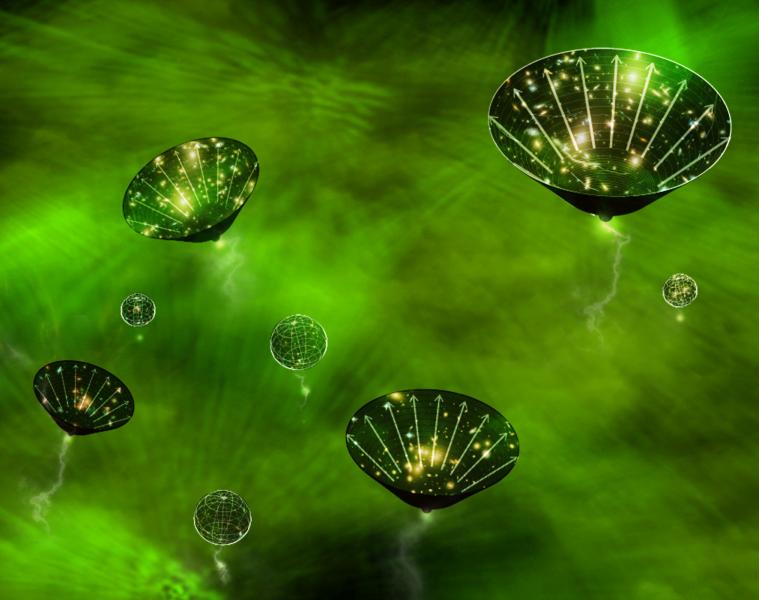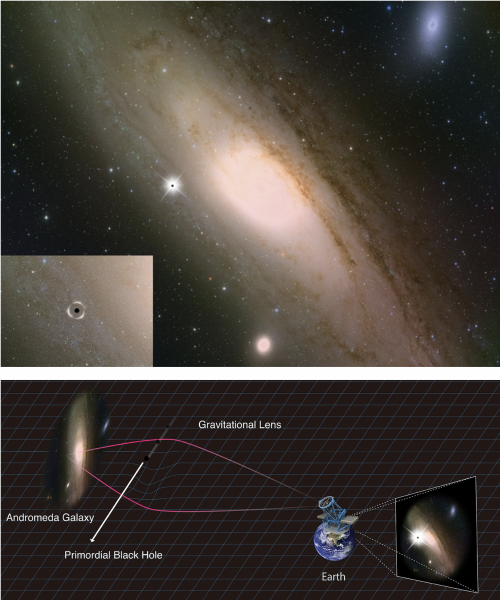Were the first black holes born in the form of baby universes?
Shortly after the Big Bang, the universe was still impenetrable. Its density was so high that a variation of only 50 percent – a coffee bean in a cake batter – would have been enough to produce a black hole immediately. The density was at least variable enough to let grow whole galaxies from the differences later. However, there seem to have been no “coffee beans” at that time – this is revealed today by the rather uniform cosmic background radiation.
Nevertheless, so-called promordial black holes could have been formed at that time, just on other ways. They could account for all or part of the dark matter today, be responsible for some of the observed gravitational wave signals, and have provided the seeds for the supermassive black holes at the center of our galaxy and other galaxies. They may also play a role in the synthesis of heavy elements when they collide with and destroy neutron stars, releasing neutron-rich material. In particular, there is the exciting possibility that the mysterious dark matter that makes up most of the matter in the universe is made up of primordial black holes.
A whole series of processes in the early universe could have created the right conditions for black holes to form. One exciting option is that primordial black holes could have formed from the “baby universes” that emerged during the inflationary phase, a period of rapid expansion that is thought to be responsible for the formation of the structures we observe today. During inflation, these baby universes could have virtually branched off from our universe until they eventually collapsed. A large amount of energy released in a small volume then led to the formation of a black hole.
An even stranger fate awaits a larger baby universe, however. When it grows beyond a critical size, Einstein’s theory of general relativity allows the baby universe to exist in a state that observers inside and outside perceive differently. From the inside, an observer sees an expanding universe, while an observer from the outside (like us) sees a black hole. The event horizons of primordial black holes then conceal the underlying structure of multiple universes – though completely inaccessible to us from the outside, since nothing can escape the event horizon of a black hole.
An international team of physicists, cosmologists, and astronomers from the Kavli Institute for the Physics and Mathematics of the Universe (Kavli IPMU) now describe such a novel scenario for the formation of PBHs in a paper showing that the black holes from the “multiverse” scenario can be found using the Hyper-Suprime-Cam (HSC) of the 8.2m Subaru Telescope on Mt. Mauna Kea in Hawaii. The HSC has the unique ability to image the entire Andromeda galaxy every few minutes. When a black hole crosses the line of sight to one of the stars, the black hole’s gravity bends the light rays, making the star appear brighter than before for a short time. The duration of the star’s brightening tells astronomers the mass of the black hole. HSC observations can be used to observe hundreds of millions of stars simultaneously, casting a wide net for primordial black holes that may cross one of the lines of sight.
The first HSC observations have already reported a very intriguing candidate event consistent with a PBH from the “multiverse,” with a black hole mass roughly equal to that of the Moon. Encouraged by this initial sign, and guided by the new theoretical understanding, the team is now conducting a new round of observations to expand the search and provide a definitive test of whether PBHs from the multiverse scenario can explain all dark matter.
If confirmed, the theory will lead to exciting thought experiments: What if we are not “on the outside” but are ourselves mere internal observers of a baby universe? Its branching off would then be what we perceive as big bang. And who says that our baby universe is not about to collapse?

